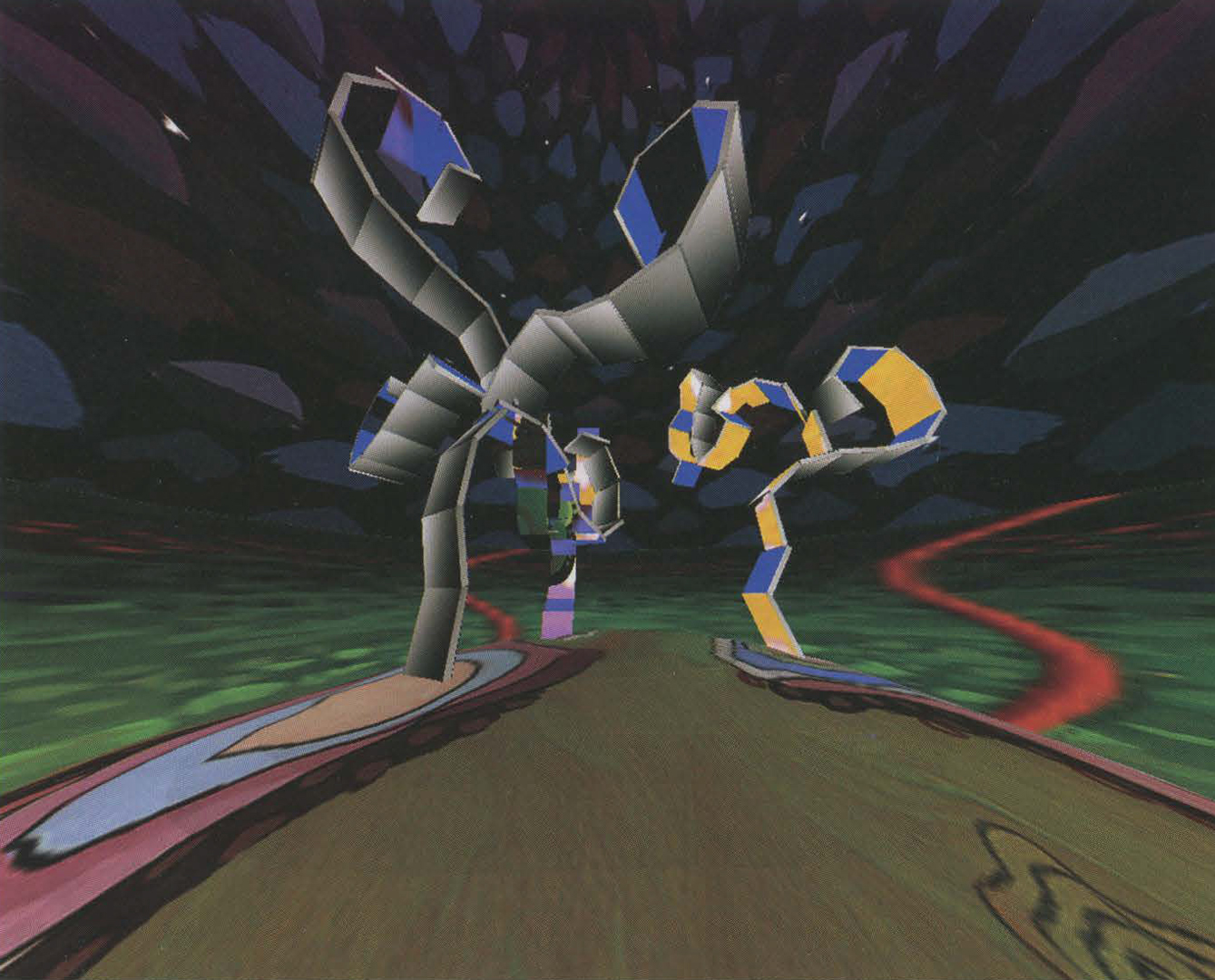Daria Tsoupikova: Rutopia 2
Artist(s):
Title:
- Rutopia 2
Exhibition:
Creation Year:
- 2007
Medium:
- Virtual reality system
Category:
Artist Statement:
Rutopia 2 is an art project built for the C-wall virtual reality system. It explores the aesthetics of virtual art in relation to traditional Russian folk arts and crafts such as wood sculpture, toys, and the decorative painting styles of Palekh, Khokhloma, and Dymkovo. The work’s aesthetic is based on the generalized outlines, principles of composition, bright colors, and simplified shapes inspired by these styles. The project presents a magic garden with interactive sculptural trees. It was conceived as a virtual environment linked to a matrix of several other unique virtual environments that together create a shared network community. A series of 3D modular sculptural trees, each consisting of dozens of rectangular screens, appear in the main environment and serve as portals to the other linked environments. Animation of these dynamic tiled trees is an attempt to break through the static flatness of the contemporary tiled-display grids, architectural façades, and surfaces into the perpetually changing 3D sculptural forms of the ubiquitous public network. Users can “grow” three trees in the island world by moving within the proximity of each tree. Each tree appears as a rapid sequence of flipping and rotating rectangular screens expanding out and upward. Once all the trees are fully grown, their screens turn into windows, and the island changes from monochrome to color. Each window shows a view of the remote environment connected to it. Just as we can look through a window and see the outside, users can look through each of the screens to see remote worlds consisting of imagery found in traditional Russian fairytales and folk art. When they move their heads completely through one of the virtual screens, they enter the connected environments.
Technical Information:
Rutopia 2 was built using Ygdrasil advanced rendering techniques, the Bergen spatialized sound server, OpenGL Performer 3.2, and the CAVE library. It operates on an Intel Linux PC running SUSE 10.0 and connected to an Ascension Flock of Birds tracker. The user is tracked from the stereo glasses and hand Wanda tracker. Participants control the direction of the movement and interaction with the objects by using only a wand interface and no buttons. The windows of the trees were made using the new Ygdrasil node stencilBuffer. This node acts as a mask covering the areas outside the windows so that only the selected window area allows a view to the other world. The storyboard sketches were first hand-painted using gouache and watercolor. They set up the color palette, composition, and virtual space layout and served as reference for development of the scene graph. The 3D models were built using the 3D Paint tool in the Maya software. The details of the decorative ornamentation were painted inside the 3D scene and then exported as models with textures. Other textures were individually painted, scanned, and applied on the 3D objects.





